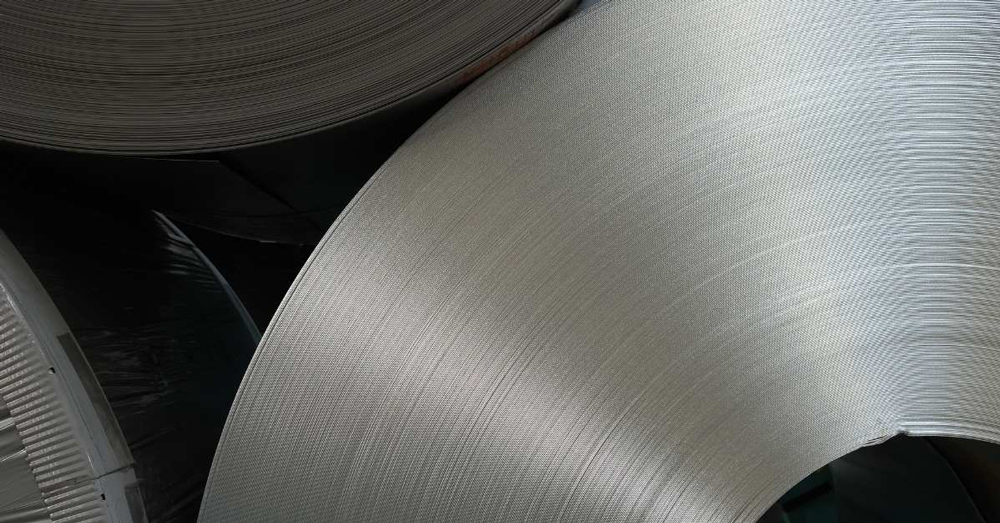The corrosion of metal materials can usually be classified into the following types:
I. Dry corrosion and wet corrosion.
II. Chemical corrosion, electrochemical corrosion, and physical corrosion.
III. Pitting corrosion and stress corrosion fracture.
The corrosion resistance of coated steel sheets is usually expressed by the degree of corrosion damage such as loss of gloss, discoloration, chalking, fine cracking, cracking, blistering, and rust spots.
There are many factors that can affect the corrosion resistance of coated steel sheets, which include the type of substrate of the coated steel plate, the type of paint, the number and thickness of coating layers, the service environment of the coated steel plate, and the machining, transportation, and storage in the application of the coated steel plate.
Solely based on the analysis of the principle of coating characteristics of the coated steel plate, the fundamental factors that determine the corrosion resistance of coated steel sheets are the structural characteristics of the coating and the corrosion resistance of the substrate. The protectiveness of the coating under the atmospheric corrosion environment is mainly determined by the corrosion resistance or the aging resistance of the coating.
Although the organic coating has the ability to isolate the steel from the external corrosive environment, there are usually tiny pinholes in the organic coating through which external moisture, steam, oxygen and various ions can penetrate into the interface between steel plate and coating. Under this situation, it can form a local battery and cause corrosion under the film.
The organic coating will bubble when corrosion occurs under the coating film. The bubbling position is consistent with the position of the anode and cathode of the local battery, where the anode area is acidic and the coating tends to become brittle. The anode area is alkaline, and the coating softens and expands gradually, which make the adhesion worse. At the same time, due to the intrusion of water in the cathode domain, the bubbling is prone to grow up and rupture, which eventually lead to the large-area corrosion.
The corrosion rate of the coated steel sheet is not only related to the physical and chemical properties of the organic coating, but also dependent on the gas, liquid and ion resistance of the organic coating. The corrosion reaction of steel in contact with water and air is the result of local battery action, which is the so-called electrochemical corrosion. The organic coating has the function of isolating steel from the external corrosive environment.
When ions pass through the coating and penetrate into the interface between the steel and the coating to form a local battery, the high resistance of the organic coating is equivalent to the resistance of inserting a resistor between the two poles of the local battery, which makes it difficult for local current to flow, thereby hindering the steel corrosion.
So, it can be seen that the anti-corrosion performance of the coating is closely related to the composition, thickness, uniformity of the coating, and the bonding force between the coating and the steel. Increasing the coating thickness and number of layers will reduce the actual tiny pinholes in the coating, which will also improve the corrosion resistance of the coating. For example, two times of coating and baking processes, or three times of coating and baking processes can be used to obtain excellent corrosion resistance coated steel plate.
The anti-corrosion mechanism of coated steel plate is to isolate the substrate from the corrosive medium by the coating and to prevent the chemical or electrochemical reaction on the surface of the substrate from happening. Therefore, the anti-corrosion problem that we finally need to study should be integrated into the chemical corrosion and electrochemical corrosion of the coated steel plate substrate surface.
Based on the above-mentioned metal corrosion mechanism, people have been looking for effective metal corrosion control methods. And after long-term practice, the following measures have been basically formed:
When selecting metal materials, it is necessary to choose those that are resistant to atmospheric corrosion;
When designing the structure, it is necessary to avoid cracks, grooves and other parts that are easy to accumulate water and cause corrosion stress cracking;
Change the composition and add corrosion inhibitor to inhibit the corrosion process;
Make anti-rust treatment before packaging, and keep dry and clean during storage. Take use of surface protective covering coating.
In order to improve the corrosion resistance and special surface properties of ordinary steel sheets, various color coated steel sheets have been developed on the basis of ordinary steel sheets.
The coating of steel plate can be roughly divided into three types: organic coating, inorganic coating and composite coating. Among them, the development of organic coating steel plate is the fastest. Organic coatings can be formulated into various colors and patterns, so they are usually called color coated steel plates. The original plate of color coated steel plate usually adopts hot-rolled steel plate and galvanized steel plate. The organic coating is polyvinyl chloride, polyacrylic acid resin, epoxy resin, alkyd resin and so on. The combination of coating and steel plate can be divided into film lamination method and paint coating method.
The color coated steel plate can also be made into a profiled plate, whose cross-sectional shape and size are basically similar to the aluminum alloy profiled plate. This kind of profiled board has the advantages of good durability, beautiful appearance, and convenient construction, so it is now widely used in the industry. The base of the coated steel plate is galvanized steel sheet, and both the back and the front are painted to ensure its corrosion resistance. The first layer on the front is primer, usually epoxy primer, which has strong adhesion to metal. The back is also coated with epoxy or acrylic resin. In the past, alkyd resin was used for the surface layer, but now it is mostly polyester paint and acrylic resin paint.

